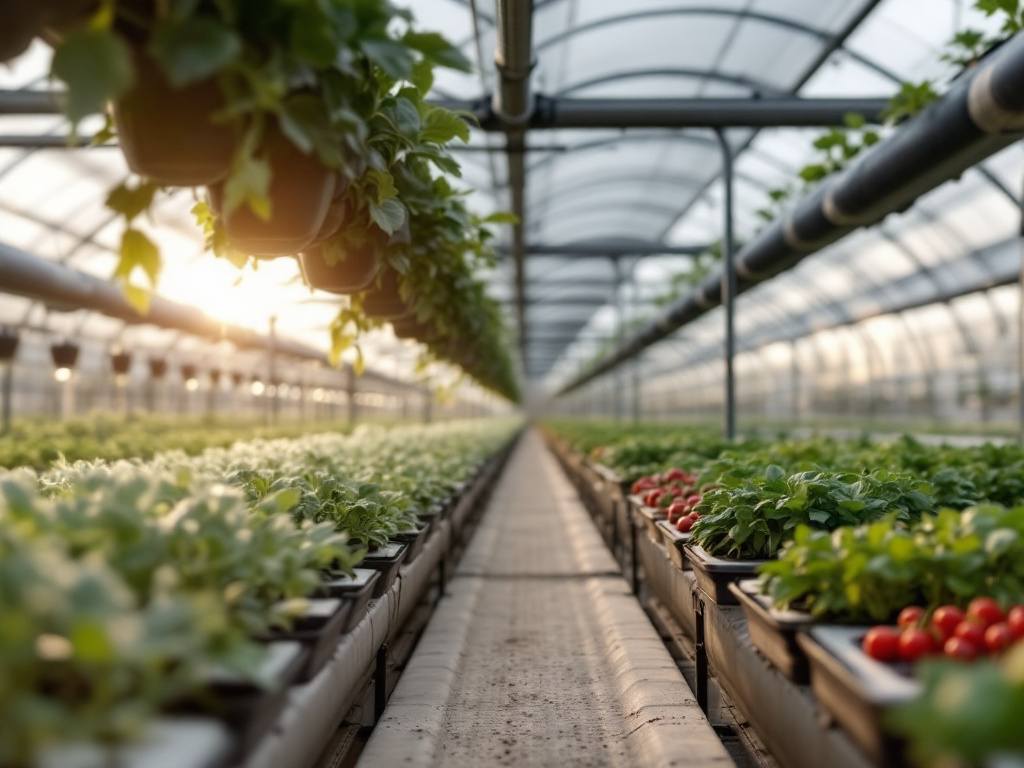Image generated by flux-ai.io & content generated by ChatGPT Version 4o-mini
Innovative Growing Techniques for Citrus County: How Greenhouse Production is Evolving
In Citrus County, where many residents have a vested interest in agriculture and horticulture, recent research from the University of Florida’s Institute of Food and Agricultural Sciences (UF/IFAS) has shed light on the latest greenhouse vegetable production systems. These findings could significantly impact local growers, especially as they strive to produce higher yields in a sustainable manner.
Understanding Greenhouse Production Systems
Greenhouses provide an ideal environment for growing vegetables, allowing for controlled conditions that can lead to better crop yields. The study outlines several production systems currently in use, including lay-flat bags, upright containers, and hydroponic methods like the Nutrient Film Technique (NFT). While the technical names might sound complex, let’s break them down in a way that is relevant to our community.
-
Lay-Flat Bags: This system involves growing plants in bags filled with a soilless mix. Think of it as planting your tomatoes in a durable, plastic bag instead of directly in the soil. This method is particularly beneficial because it reduces the risk of root diseases and makes watering and feeding plants easier. For Citrus County farmers, this could mean healthier plants and a more predictable growing season.
-
Hydroponic Systems: Hydroponics, especially the NFT system, allows plants to grow without soil. Instead, they receive nutrients directly through a flowing film of water. This technique is gaining popularity in Florida, especially for growing leafy greens and herbs. For local growers, adopting hydroponics can lead to faster harvests and the ability to grow crops year-round, regardless of weather conditions.
-
Vertical Growing: Another fascinating method involves growing plants vertically, which is particularly advantageous for smaller spaces. Imagine a stack of pots, each filled with herbs or strawberries, that can be grown in a compact area. This method not only maximizes space but also makes it easier to manage crops without bending over, an essential consideration for many older residents in Citrus County.
Why Does This Matter?
These innovative growing techniques can significantly impact Citrus County’s agricultural landscape. By adopting modern greenhouse systems, local farmers can increase their productivity while using fewer resources. Here are a few reasons why this research is especially relevant:
-
Economic Benefits: As Citrus County’s population grows, so does the demand for fresh, local produce. Increased yields from these advanced systems can help local farmers meet this demand, boosting the economy.
-
Environmental Sustainability: Many of these growing methods require less water and reduce the risk of chemical runoff into local waterways—a concern for many in our community, especially given our proximity to natural springs and waterways.
-
Community Education: Programs like 4-H and agricultural extension services in Citrus County can leverage this research to educate young farmers and community members about modern agricultural practices, fostering a new generation of environmentally conscious growers.
Conclusion
The findings from UF/IFAS on greenhouse vegetable production systems highlight a shift towards more sustainable and productive farming techniques. For Citrus County residents, especially those involved in agriculture, these innovations present an opportunity to enhance local food production, improve economic stability, and promote environmental stewardship. As our community continues to grow, embracing these advancements in horticulture will be crucial in ensuring a sustainable future for all.
References
HS785/CV263: Production Systems—Florida Greenhouse Vegetable Production Handbook, Vol 3. (n.d.). Ask IFAS – Powered by EDIS. https://edis.ifas.ufl.edu/publication/CV263

